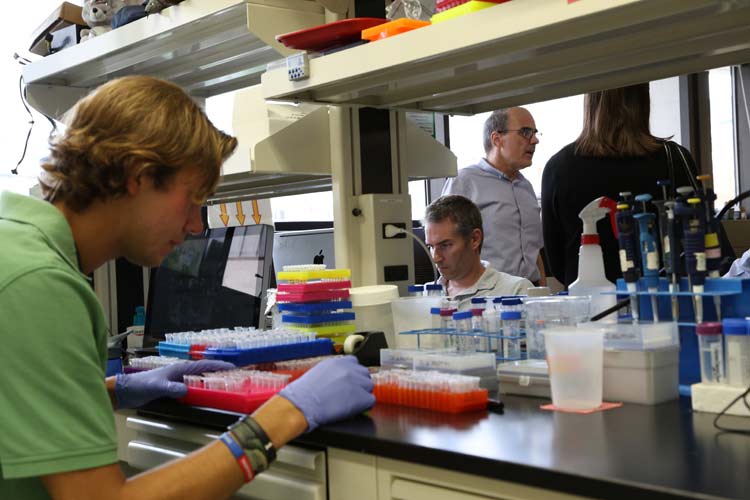
Brain Awareness Video Contest Allows Creativity to Flow
Since the annual Brain Awareness Video Contest began in 2011, nearly 200 neuroscience enthusiasts have submitted creative, entertaining videos aimed at educating the public about neuroscience. Each year the Society for Neuroscience evaluates the videos for scientific accuracy and creativity and awards prizes to the top three videos and the people’s choice winner.
“The Brain Awareness Video Contest is an exciting way to engage and educate the public about the wonders of the brain,” said Scott Thompson, chair of SfN’s Public Education and Communication Committee. “This year’s submissions cover a range of neuroscience topics that will appeal to diverse audiences.”
First-Place Winner:“Do We See the Same Red?”
Matthew Sugrim, a recent college graduate from the U.K., created the winning video, “Do We See the Same Red?” because he was unsatisfied with some of the answers he found online when researching the visual system. “Most [videos] treated the brain like an unknowable black box, which magically outputs perceptions,” he said. “None thought to look inside it.”
When Sugrim learned about the Brain Awareness Video Contest, he said he felt it would be the perfect platform to animate a video to better answer his questions. He also said he was curious to see whether a video like his, which explains how the brain and eyes work together to process color, could be a good method for teaching science.
The first-place winner of the Brain Awareness Video Contest is awarded $1,000, plus a free trip to SfN’s annual meeting. Sugrim won an additional $500 for being voted the public's favorite video in the People's Choice Award contest.
Second-Place Winner: “How Powerful Illusions Lead to Coding in the Brain”
Guillaume Riesen’s video, “How Powerful Illusions Lead to Coding in the Brain,” explores some visual illusions to help explain the idea of population coding in the brain. Riesen, a graduate student at Stanford University, said he chose to study cognitive neuroscience for his undergraduate degree “because of the intensely interdisciplinary approach necessary to answer the questions being posed there.”
He said neuroscience is his main scientific passion, noting that, “the questions [neuroscience] attempts to answer are some of the most philosophically fascinating and fundamental to our human existence.”
Third-Place Winner: “Your Sixth Sense”
The video contest is becoming a yearly tradition for some entrants, including third-place winner Alison Caldwell of the University of California, San Diego, and her co-creator and husband, Micah Caldwell. Their video, “Your Sixth Sense,” explains the concept of proprioception, the ability to sense our own body position and movement. The Caldwells came in second place in last year’s contest with their video “Three Lesions, Three Lives.”
“We participate in the BAVC because we love spreading the neuroscience love!” Alison Caldwell said. “It's a fun challenge to come up with a new, interesting topic every year and to film and edit the video before the deadline.”
She learned about the Brain Awareness Video Contest from a fellow UCSD graduate student who knew of her interest in making science-themed videos. Caldwell said her interest in neuroscience started when she took an introductory psychology course as an undergraduate. “Like many, I was drawn to the big questions of consciousness and individuality, wondering if we'd ever be able to reduce the human mind to a signaling diagram,” she said.
Honorable Mention: “The More You Hear, the Less You Hear!”
Honorable mention also goes to a multiyear awardee. Vania Cao, an application scientist, produced her video, “The More You Hear, the Less You Hear!” about how hearing deteriorates the more we listen to loud music. Cao placed third in last year’s contest with her video “Brainbows — Mixing Colors to Map The Brain” and tied for second in 2013 with “Populations Coding: Mind Reading and More.”
The top videos from each year’s contest are available on BrainFacts.org, a public information initiative of The Kavli Foundation, the Gatsby Charitable Foundation, and SfN.


















